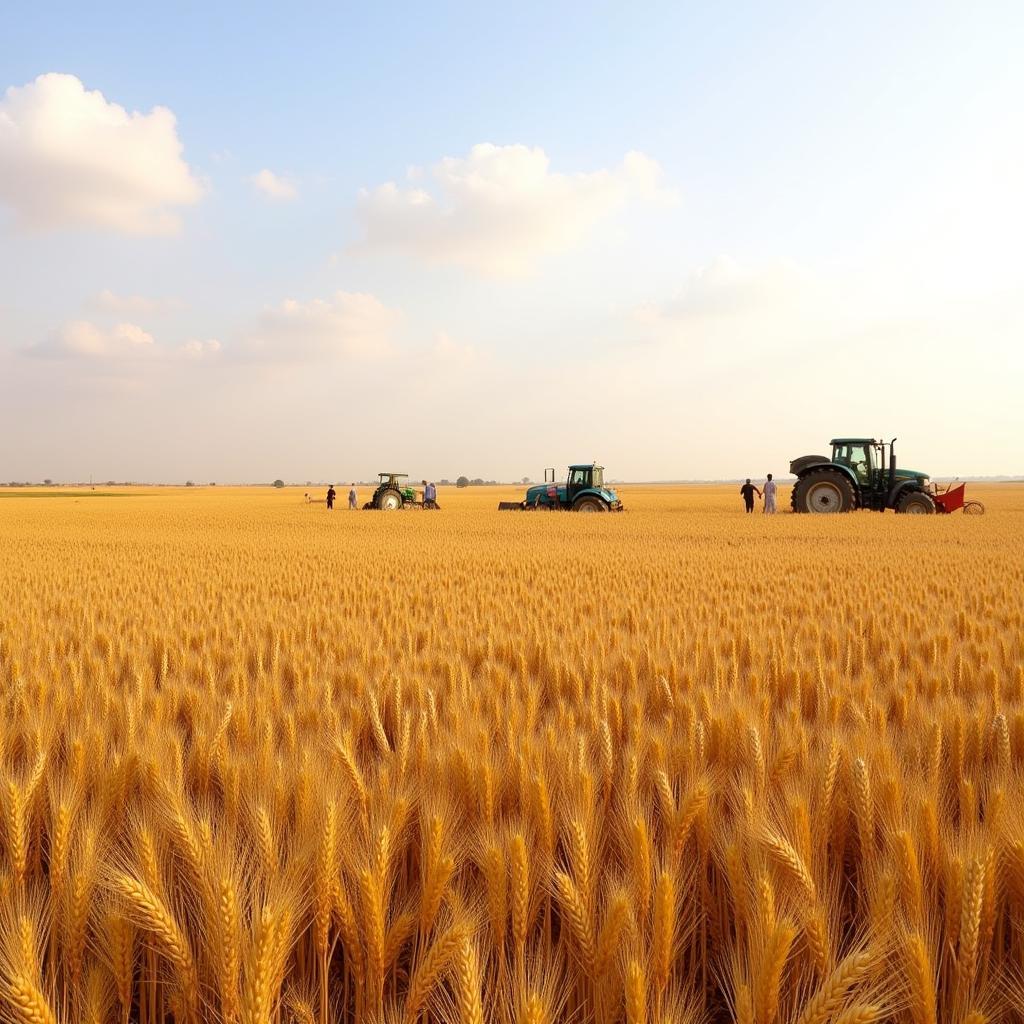The price of flour in Pakistan has been a topic of much discussion and concern in recent times. As a staple food for millions across the country, fluctuations in flour prices have a direct impact on household budgets and food security. This article delves into the current trends in flour prices in Pakistan, exploring the underlying factors contributing to these changes and their implications for consumers and the economy.
Factors Influencing Flour Prices
Several interconnected factors influence the price of flour in Pakistan. Understanding these factors is crucial to comprehending the current market dynamics and anticipating future trends.
Production Costs
The cost of producing wheat, the primary ingredient in flour, plays a significant role in determining flour prices. Factors such as input costs (fertilizers, seeds, pesticides), labor wages, and energy prices directly impact the overall production expenses for farmers.
Supply and Demand
The fundamental principles of supply and demand exert a powerful influence on flour prices. When wheat production surpasses demand, prices tend to decrease. Conversely, when demand outstrips supply, prices are likely to increase.
Government Policies
Government policies, such as import tariffs, export quotas, and subsidies, can significantly influence the price of flour. These policies are implemented to regulate the market, ensure food security, and stabilize prices.
Transportation and Milling Costs
Transportation costs associated with moving wheat from farms to mills and then distributing flour to retailers contribute to the final price. Additionally, milling expenses, including energy costs and processing fees, also play a role.
International Market Trends
Pakistan’s flour prices are also influenced by global wheat prices and market dynamics. Factors such as global production levels, international demand, and currency exchange rates can impact domestic flour prices.
 Wheat Harvest in Pakistan
Wheat Harvest in Pakistan
Current Trends in Flour Prices
In recent months, Pakistan has witnessed an upward trend in flour prices. This surge can be attributed to a confluence of factors, including:
-
Inflationary pressures: Like many countries, Pakistan is grappling with inflationary pressures affecting various sectors, including food prices. Rising input costs, transportation expenses, and energy prices contribute to the overall increase in flour prices.
-
Supply chain disruptions: The COVID-19 pandemic and recent geopolitical events have disrupted global supply chains, leading to increased transportation costs and logistical challenges, which ultimately impact flour prices.
-
Depreciation of the Pakistani Rupee: The depreciation of the Pakistani Rupee against the US dollar has made importing wheat more expensive, further contributing to the upward pressure on flour prices.
Impact on Consumers
The escalating flour prices have a direct bearing on consumers, particularly those belonging to lower-income brackets who allocate a significant portion of their income to food expenses. The rising cost of this essential commodity puts a strain on household budgets and can lead to food insecurity.
“Rising flour prices hit low-income households the hardest,” says Dr. Ayesha Khan, a leading economist specializing in food security in South Asia. “They have limited options to cope with these price hikes, which can lead to difficult choices between food and other essential needs.”
 Pakistani Family Baking Roti
Pakistani Family Baking Roti
Government Measures and Future Outlook
The Pakistani government is cognizant of the challenges posed by rising flour prices and has implemented various measures to mitigate the impact on consumers. These include:
-
Price controls: The government has introduced price caps on flour to make it more affordable for consumers. However, the effectiveness of such measures in the long run is debatable.
-
Subsidies: The government provides subsidies to flour mills to reduce production costs and stabilize prices. These subsidies aim to cushion the impact of rising wheat prices on consumers.
-
Strategic reserves: Pakistan maintains strategic wheat reserves to ensure food security during times of shortage or price volatility.
Predicting the future trajectory of flour prices is challenging due to the complex interplay of various factors. However, close monitoring of government policies, global market trends, and domestic production levels will be crucial in navigating the evolving landscape of flour prices in Pakistan.
FAQs
Q: What is the current average price of flour in Pakistan?
A: The average price of flour can vary depending on location, brand, and type. However, it currently ranges from [Insert approximate price range] per kilogram.
Q: What are the main types of flour available in Pakistan?
A: The most common types of flour include chapati flour, fine flour (maida), and whole wheat flour (atta).
Q: Where can I find information on daily flour prices in Pakistan?
A: Several websites and mobile applications provide daily updates on flour prices in major cities across Pakistan.
Related Resources
For any queries or assistance, please contact us at:
Phone: +923337849799
Email: [email protected]
Address: Dera Ghazi Khan Rd, Rakhni, Barkhan, Balochistan, Pakistan.
Our dedicated customer support team is available 24/7 to assist you.